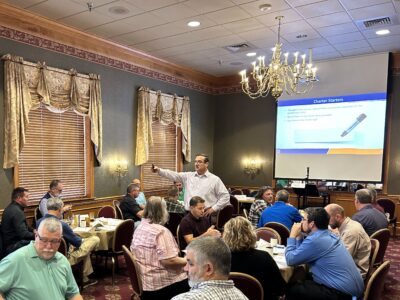
SUPPORTING INDIVIDUALS
Leadership & Talent Development
We partner with organizations to define their core competencies and critical capabilities, then we use our library of leadership content to build leadership programs using a variety of delivery methods. Every organization is different. See how we can meet your needs.

SUPPORTING TEAMS
Team Development
We facilitate team sessions at all stages of group development: from when a team first forms to when a team starts to engage in conflict and storm. We guide you to build a high-performing team.

SUPPORTING ORGANIZATIONS
Strategic Planning & Change Management
Data suggest that leaders lack the time to focus on strategy development and implementation. We have a proven approach with simple tools to facilitate you through a strategic planning process and can build your implementation strategy with you using practical change management techniques.

SUPPORTING ORGANIZATIONS
Training & Course Development
We have done it all when it comes to building training programs and developing courses, whether your teams prefer live, virtual or online training. Together, we can build learning paths that blend together all approaches into a high impact training experience.
We understand contemporary challenges
Today’s world is filled with talent management and workforce development challenges. We understand how a number of issues can impact your business and impede on your overall strategy, such as:
Leadership Development – Identifying and developing future leaders within the organization is difficult, especially with the changing nature of leadership in a digital and remote work environment.
Learning & Development – Organizations are challenged with meeting the ongoing learning and development needs of employees, in keeping their skills relevant in a rapidly changing business environments.
Skills Shortages – Many industries are experiencing a shortage of skilled workers in critical areas, making it difficult to find and retain talent with the necessary skills.
Talent Pipelines – Many organizations are concerned with effectively developing and maintaining talent pipelines for critical roles and future needs.
Succession Planning – Talent managers must prioritize the development of effective succession plans for key roles to ensure a smooth transition of leadership.

